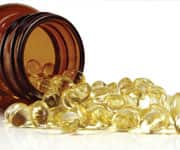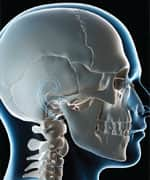Life Extension Magazine®

It’s not often that you hear about an accomplished, mainstream trauma surgeon getting laughed at by his colleagues after presenting an innovative health idea. It is even less often that a doctor receiving that kind of response would admit to the laughter and even take it with a smile. But in the case of Dr. L. Ray Matthews, an assistant professor of surgery at Morehouse School of Medicine and the Surgical Critical Care Director at Grady Memorial Hospital in Atlanta, Georgia, he would also end up winning over those other surgeons who were skeptical of his cutting-edge thinking.
Now, you might be wondering, what was this radical idea that caused so much skepticism? It was simple: Dr. Matthews believed in the incredible healing power of vitamin D.
“People always ask me about how a surgeon could get involved in vitamin D research,” Dr. Matthews says. “My answer is that being a surgeon, I’m very interested in wound infections and getting patients off of ventilators. I’m interested in helping my patients heal faster, and I want to decrease the incidence of pneumonia. Essentially, I want my patients healthy and out of the hospital as quickly as possible.”
All of these desires led Dr. Matthews, who wanted to be a physician since he was four years old, to his renowned work with vitamin D.

Case in point, last summer, Dr. Matthews and a team of Morehouse doctors published a landmark paper in the American Journal of Surgery looking at the benefits of vitamin D’s use in critically ill patients, such as decreased length of hospital stays, decreased hospital costs, and decreased mortality rates.1 Dr. Matthews and his team also pioneered a medical therapy combination of vitamin D, omega 3-fatty acids, glutamine, and progesterone to treat patients with concussions and traumatic brain injuries.
Dr. Matthews is now writing a manuscript on vitamin D’s use in reducing the incidence of congestive heart failure, which is expensive to treat because of the high readmission rate associated with the condition.
“We can cut the 30-day readmissions rate by at least 50% using vitamin D,” Dr. Matthews says. “Vitamin D is an inexpensive way to increase cardiac contractility because it increases calcium absorption.2 Calcium makes the heart contract, or beat, better.”3
Cutting hospital readmission rates, he says, is a top priority of the Centers for Medicaid and Medicare.
Defining a ‘D’ Deficiency

Vitamin D is a steroid hormone that directly influences over 200 out of some 20,000 to 25,000 human protein-coding genes and notably binds to a number of genes associated with autoimmune disease and cancer.4-6
“You can’t achieve optimal health, athletic performance, or cognitive performance without adequate vitamin D levels. Vitamin D is a very powerful chemical in the human body,” Dr. Matthews says.
He strongly urges people to get their vitamin D levels checked on a regular basis, and he is careful to note that the government’s currently acceptable level of vitamin D in the bloodstream, with a lower limit of 30 ng/mL, is far too low.7
“For me, anything in the 50 to 55 ng/mL range is where you want to be,” he says. “All animals in nature are between 50 and 55 ng/mL in the wild, but once we bring them into captivity, they drop. This happens in its own way to humans as well. When you’re in an Intensive Care Unit or another room in a hospital, your vitamin D level drops 50% in the first 24-48 hours. If you come into the hospital at 30 ng/mL, or below, and you drop below 18 ng/mL, your risk of death increases by 30%. It is a serious problem.”
Since the government has been lagging on this issue, Dr. Matthews has taken it upon himself to educate officials and explain the science and importance of vitamin D. He also believes that insurance companies are going to soon be all over the importance of the vitamin because it can prevent a lot of the chronic injuries that plague otherwise healthy people.
“I’ve met with a lot of government officials who didn’t know about what vitamin D can do,” Matthews says. “I’ve been giving lectures to educate them. You have to have a passion for it. Most people, once they see the evidence, accept what I’m saying. For instance, in our hospital, our mortality rate is down 42% with critically ill patients for all traumas with our new vitamin D protocol.”
Of course, Dr. Matthews wasn’t able to simply walk into his hospital and declare a new strategy for using vitamin D on all patients. It took much convincing, and that convincing began with, of all people, the staff nutritionist.
“The best way I could explain what I was talking about was to show the nutritionist our patients’ vitamin D levels as they were admitted,” he explains. “I would order the test right away and as they’d come back, I’d walk over to the nutritionist and show her. We had some horribly low levels. The average person coming into the ICU at Grady had a hydroxyvitamin D level of 15 ng/mL, which is very, very low. But we’d see people with single digit numbers. Four. Six. Once I showed the nutritionists these numbers, my question to them was, ‘Why aren’t you checking vitamin D levels?’”
Vitamin D: The Experiences of a Cutting-Edge Surgeon
 |
- Dr. Matthews and a team of Morehouse doctors published a landmark paper describing the benefits of vitamin D’s use in critically ill patients, such as decreased length of hospital stays, decreased hospital costs, and decreased mortality rates.
- Vitamin D is a steroid hormone that directly influences over 200 of some 20,000 to 25,000 human protein-encoding genes and notably binds to a number of genes associated with autoimmune disease and cancer.
- “You can’t achieve optimal health, athletic performance, or cognitive performance without adequate vitamin D levels. Vitamin D is a very powerful chemical in the human body,” Dr. Matthews says.
- Dr. Matthews presided over a parent-led vitamin D supplementation protocol at Martin Luther King, Jr. High School in Lithonia, Georgia, where the MLK football team has only had one concussion and almost a 100% reduction in sports injuries over the past two years.
Dissecting Low D Levels

Dr. Matthews points out that up until this most recent generation of children, people didn’t use much sunscreen, and they didn’t limit their time outdoors. Also, as technology gets better and better, fewer and fewer Americans are working outside. When you’re indoors, 98% of sunlight is blocked out.
“You can only make vitamin D from the last week in March until the first week in October,” he explains. “You need the sun at a ninety degree angle in the Northern Hemisphere to make vitamin D. Even in the winter we can’t grow crops or food or vegetables. This means most Americans aren’t making any D for close to five months a year. This is why D levels plummet in the winter and so many people get sick due to compromised immune systems. People get the winter blues and become ill.”
When you combine massively reduced sun exposure with an overall vitamin-deficient diet, you get the perfect storm of D deficiency that we see today.
“This deficiency is showing up everywhere,” Dr. Matthews says. Elite military personnel such as Navy SEALs experience a high rate of stress fractures—up to 23% during unit training.8 “They’re testing these soldiers, and their vitamin D levels and intakes are low.9 There is now a push trying to get the military to supplement the Navy SEALs with vitamin D,” reports Dr. Matthews.
Another area where low D levels are showing is in the world of sports. The National Football League’s New York Giants recently did a vitamin D study in 2010 and found out that 81% of their players were vitamin D deficient or insufficient, as reported during the American Orthopedic Society for Sports Medicine convention held in San Diego.10 The players that had lower levels of vitamin D were susceptible to more soft tissue injuries. In addition, the National Hockey League’s Chicago Blackhawks have most players on 5,000 IU of vitamin D a day to help reduce injuries and have seen impressive results.11
“When your vitamin D level gets too low, it affects your skeletal system,” Dr. Matthews explains.12 “If your skull is made of bone, you can strengthen it with D levels to help it withstand hits. There is a direct correlation between the levels of vitamin D dropping in young athletes and the current rise of concussions.”
Dr. Matthews presided over a parent-led vitamin D supplementation protocol at Martin Luther King, Jr. High School in Lithonia, Georgia, where his nephew was a student athlete. In 2011, the school began a nutrition program that included a daily dose of vitamin D. During the past two football seasons, the football team finished with a 23-2 record in a competitive 5A conference. Even more important, MLK football team has only had one concussion and almost a 100% reduction in sports injuries over the past two years. Forty-nine MLK student athletes have received four-year scholarships to play football at the college level over the past two seasons.
“I think so much of this is due to the fact that we have strong muscles, but weak bones,” Dr. Matthews says. “Your skull can’t take as much force if it isn’t at full strength.”
Beyond D
In addition to a vitamin D deficiency making skulls softer, Dr. Matthews has noticed how this deficiency, coupled with a few others, can negatively affect the human brain.
“The human brain is made up of 30% of the omega-3 fatty acid DHA,” he says.13 “Most people are omega-3 deficient. You don’t repair a brick wall with straw, but that’s what so many people are doing. Their brains and skull need reinforcements, and we’re not giving them the nutrients they need. Instead we’re feeding them omega-6s, sugars, chemicals, cakes, pies, and cookies, all of which are associated with inflammation. That’s like throwing gas on the fire. If you’re deficient in either omega-3s or vitamin D, you’re in trouble. Much of America is deficient in both.”
One of the most impressive things about Dr. Matthews is that he isn’t just lecturing based on an untested hypothesis. Time and again his protocols involving vitamin D supplementation along with other nutrients have shown remarkable results in his hospital.
A recent case in particular brought him some notoriety, when a 17-year-old girl showed up in his trauma unit after she was in a horrific car accident, including a devastating head injury. According to Dr. Matthews, over half of the patients with her type of head injury do not survive and another 47% are in permanent comas or severely impaired for the rest of their lives. The remaining 3% regain consciousness.
When the young woman was admitted to the hospital, she was immediately administered a regimen of vitamin D3, omega-3 fatty acids, glutamine, and progesterone. These nutrients saved her life. The doctors saw slight improvements every day and, only six months after an accident that should have either killed or incapacitated her, the young woman was walking and talking and close to acting as if the accident never happened.
Summary
“The body needs hundreds of different vitamins, minerals, enzymes, and nutrients to function properly,” Dr. Matthews says. “Americans may have nearly 60 deficiencies.14 I don’t have time to waste on something that’s not working, which is why I call vitamin D ‘God’s miracle vitamin’. It is the backbone drug supplement in treating traumatic brain injury because it works on so many levels.15 Vitamin D3 directly influences hundreds of human genes.4 That makes vitamin D a very powerful substance.”
If you have any questions on the scientific content of this article, please call a Life Extension® Health Advisor at 1-866-864-3027.
Dr. Matthews is a full-time faculty member of Morehouse School of Medicine, Department of Surgery. He was appointed Assistant Professor of Clinical Surgery in February 2007. Dr. Matthews serves as a surgical critical care and trauma surgeon. Dr. Matthews received his medical degree in May 1989 from the University of Mississippi. He completed his surgical residency training at Morehouse School of Medicine in 1997; with prior residency training from Conemaugh Valley Memorial Hospital in Johnstown, Pennsylvania, Western Care Reserve System in Youngstown, Ohio, and the District of Columbia General Hospital in Washington, D.C. In June 2004, Dr. Matthews completed a two-year surgical critical care fellowship at the Mayo Clinical College of Medicine in Rochester, Minnesota. He was a Senior Associate Consultant at Mayo Clinic in Rochester, Minnesota from 2004-2006. Matthews is a diplomat of the American Board of Surgery receiving certification in both General Surgery and Surgical Critical Care.
References
- Matthews LR, Ahmed Y, Wilson KL, Griggs DD, Danner OK. Worsening severity of vitamin D deficiency is associated with increased length of stay, surgical intensive care unit cost, and mortality rate in surgical intensive care unit patients. Am J Surg. 2012 Jul;204(1):37-43.
- Pilz S, Tomaschitz A, Drechsler C, Dekker JM, März W. Vitamin D deficiency and myocardial diseases. Mol Nutr Food Res. 2010 Aug;54(8):1103-13.
- Katz AM. A growth of ideas: role of calcium as activator of cardiac contraction. Cardiovasc Res. 2001 Oct;52(1):8-13.
- Available at: http://www.sciencedaily.com/releases/2010/08/100823172327.htm. Accessed May 14, 2013.
- Ramagopalan SV, Heger A, Berlanga AJ, et al. A ChIP-seq defined genome-wide map of vitamin D receptor binding: associations with disease and evolution. Genome Res. 2010 Oct;20(10):1352-60.
- Available at: http://www.ornl.gov/sci/techresources/human_genome/faq/genenumber.shtml. Accessed May 14, 2013.
- Available at: http://www.nlm.nih.gov/medlineplus/ency/article/003569.htm. Accessed May 7, 2013.
- Finestone A, Milgrom C, Wolf O, Petrov K, Evans R, Moran D. Epidemiology of metatarsal stress fractures versus tibial and femoral stress fractures during elite training. Foot Ankle Int. 2011 Jan;32(1):16-20.
- Moran DS, Heled Y, Arbel Y, et al. Dietary intake and stress fractures among elite male combat recruits. J Int Soc Sports Nutr. 2012 Mar 13;9(1):6.
- Available at: http://www.medscape.com/viewarticle/746310. Accessed May 7, 2013.
- Available at: http://www.vitamindcouncil.org/newsletter/newsletter-vitamin-d-and-the-chicago-blackhawks. Accessed May 7, 2013.
- Ryan LM, Teach SJ, Singer SA, et al. Bone mineral density and vitamin D status among African American children with forearm fractures. Pediatrics. 2012 Sep;130(3):e553-60.
- Available at: http://www.ext.colostate.edu/pubs/foodnut/09382.html. Accessed May 7, 2013.
- Available at: http://www.cdc.gov/nutritionreport/pdf/exesummary_web_032612.pdf. Accessed May 7, 2013.
- Aminmansour B, Nikbakht H, Ghorbani A, et al. Comparison of the administration of progesterone versus progesterone and vitamin D in improvement of outcomes in patients with traumatic brain injury: A randomized clinical trial with placebo group. Adv Biomed Res. 2012;1:58.

